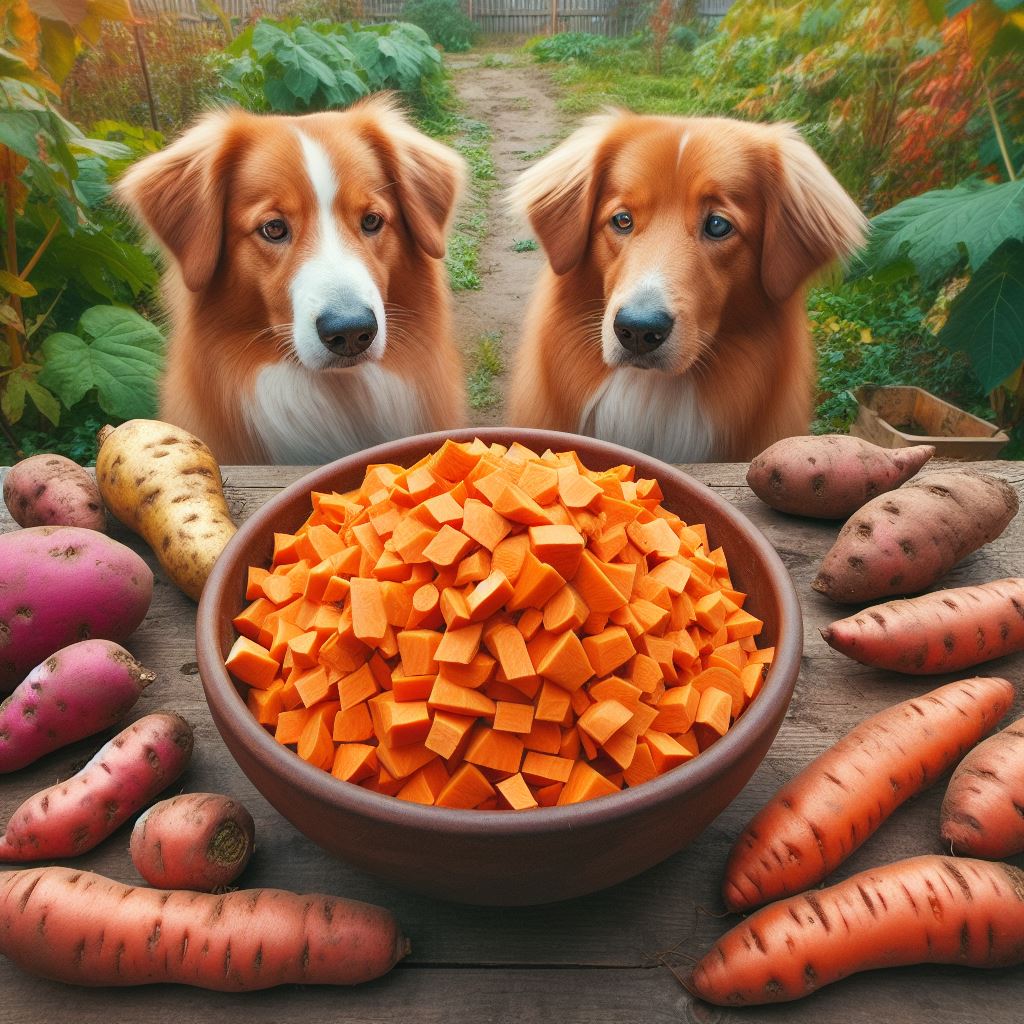Can Dogs Safely Eat Sweet Potatoes
Yes, dogs can safely eat sweet potatoes in moderation. This root vegetable is not only safe but also beneficial due to its high content of dietary fiber, vitamins such as A, C, and B6, and minerals like potassium and manganese.
However, it’s important to introduce any new food item into your dog’s diet gradually to monitor any adverse reactions.
Preparing sweet potatoes for your dog requires a bit of attention. Raw sweet potatoes aren’t suitable, as they can be hard for your dog to digest and could lead to an intestinal blockage.
Instead, cooking them is essential. Baking or boiling are excellent methods to make sweet potatoes safe for dogs to eat. Always serve them plain, without added sugars, spices, garlic, onions, or fats, which can be very harmful.
When integrating sweet potatoes into your pet’s diet, consider them as a treat rather than a staple. While the health benefits of sweet potatoes for dogs are substantial, they should complement a well-balanced diet tailored to your pet’s nutritional needs.
Moderation is key, as too much can lead to excessive weight gain or other health issues due to the high carbohydrate content.
Now that you know the basics of the safety and benefits of sweet potatoes for dogs, it’s time to learn how to serve them properly.
After all, even safe foods can become hazards if not prepared correctly. In the next section, I’ll guide you through the best methods to prepare and serve sweet potatoes, ensuring you do so in a way that maximizes safety and nutritional value for your furry friend.
Preparation and Serving Tips for Sweet Potatoes
Sweet potatoes can be a nutritious addition to your dog’s diet, but preparation is key. It’s crucial to cook sweet potatoes before offering them to your pet, as raw sweet potatoes can be hard for dogs to digest.
Baking, boiling, or steaming them without any added seasonings, sugars, or salts is the safest bet.
When it comes to serving sweet potatoes, less is more. Just like any treat or addition to their diet, it should not make up a large portion of a dog’s daily intake.
A good rule of thumb is that treats should account for no more than 10% of their overall diet. For large breeds, a few chunks will do, while a small breed might only need a bite-sized piece.
You can also get creative when serving sweet potatoes to your dog. For example, after proper cooking, mash them as a topper on their regular food or freeze small pieces for a refreshing treat.
Always introduce any new food gradually, and observe how they respond before making it a regular part of their meals.
Know the Limits and Risks
Just as with any food, there’s a point where enough becomes too much. Even nutritious sweet potatoes can lead to health issues if dogs overindulge.
Here’s where I stress the importance of moderation. Overconsumption can cause imbalances, potentially leading to obesity or diabetes due to their high carbohydrate content.
I also advise keeping an eye on your dog after introducing sweet potatoes to their diet. Some dogs might experience gastrointestinal upset, such as diarrhea or constipation. Should you notice your pet displaying signs of distress, it’s advisable to discontinue the sweet potatoes and consult your vet.
Moreover, be aware of allergic reactions. They’re rare, but they can happen. If you see signs of an allergic reaction — such as itching, swelling, or difficulty breathing — seek veterinary help immediately.
Having a chat with your veterinarian before making any significant changes to your dog’s diet is a responsible step. They can provide personalized advice based on your dog’s health, size, age, and activity level.
A vet’s guidance ensures you’re catering not just to taste preferences but to nutritional needs.
Remember, dogs don’t need variety in their diets the way humans do. Occasionally adding sweet potatoes is fine, but a consistent, balanced diet is key to long-term health.
Lastly, steer clear from any sweet potato products with added sugars, spices, or preservatives — plain is best for your furry friend.







